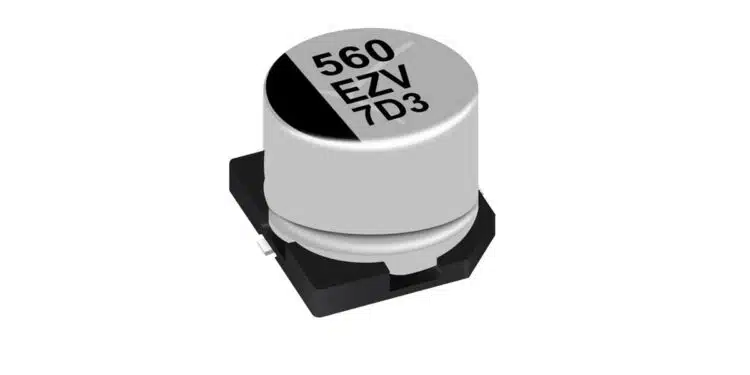Panasonic Industry Europe announces the launch of its new ZVU Series Hybrid aluminum capacitors with high ripple current in compact case sizes.
Designed to meet the demands of advanced electronic systems, the ZVU Series epitomizes exceptional reliability, extended lifespan, and superior thermal management.
The ZVU Series Conductive Polymer Hybrid Aluminum Electrolytic Capacitors distinguish themselves with an impressive ripple current range of 3.3Arms to 4.6Arms—up to double that of comparable case sizes from competitors.
Coupled with a reduced Equivalent Series Resistance (ESR) as low as 12mΩ, these capacitors integrate the best of electrolytic and solid polymer technologies. This synergy ensures unmatched efficiency and stability, even under extreme thermal conditions reaching up to 135°C.
Key Advantages of the ZVU Series:
- High Ripple Current (3.3Arms to 4.6Arms): Optimally designed for robust power supply applications in automotive, industrial, and communication infrastructures.
- Compact Design: Offering high capacitance values from 56µF to 560µF, ideal for densely populated PCB configurations.
- Automotive-Grade Reliability: Fully compliant with AEC-Q200 standards and equipped with anti-vibration solutions, ensuring top-tier performance in critical automotive environments.
- Sustainability: RoHS and REACH compliant
“With the introduction of the ZVU Series, Panasonic Industry Europe is reaffirming its commitment to innovation and high-performance solutions,” said Benno Kirschenhofer, Product Communications Manager at Panasonic Industry Europe. “These hybrid capacitors are developed to meet a broad spectrum of demanding applications, including in-vehicle electronics, powertrain systems, and advanced industrial equipment, where reliability and efficiency are paramount.”
Target Applications:
- Automotive Systems
- Power Converters and Inverters
- Industrial Automation and Control Systems
- Communication Infrastructure and Base Stations
































